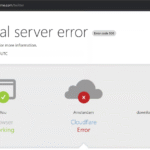When it comes to protecting your business online, the language of cybersecurity can sound like a foreign language. Firewalls, antivirus software, phishing, and vulnerability… What do these words really mean? Let’s break down some of the most common terms you’ll encounter!
What Is a Firewall?
Think of a firewall as a security guard standing between your business’s internal network and the outside world. Its job is to monitor traffic coming in and out, deciding what to allow and what to block.
Firewalls can be hardware-based, like a router that filters traffic before it reaches your computers, or software-based, installed directly on devices to control data access.
A properly configured firewall helps prevent hackers from sneaking into your systems through open ports or unsecured applications. For most small businesses, this is your first line of defense against unauthorized access.
What Does Antivirus Software Do?
Antivirus software is your business’s health checkup for computers. It scans files, emails, and downloads for malicious code like viruses, worms, and trojans. Without getting too specific, these are just programs designed to harm your system or steal information.
Modern antivirus programs do much more than remove infected files. Many now include real-time protection, web filters, and even ransomware shields that stop threats before they can take hold.
If your employees are downloading files, using USB drives, or visiting multiple websites each day, a reliable antivirus solution is essential to prevent accidental infections.
What Is Vulnerability?
A vulnerability is a weakness, in your software, system, or even your staff’s habits, that can be exploited by attackers.
For example, outdated software may have security holes that hackers already know how to exploit. A team member using “password123” could be another kind of vulnerability.
Staying secure means staying proactive: update software regularly, enforce strong password policies, and consider regular security audits to find weak spots before cybercriminals do.
How Layers of Protection Work Together
Cybersecurity is about the systems put in place to protect your data. It’s not just one tool doing all the heavy lifting. Instead, it’s about layering multiple defenses so that if one fails, another stands in the way.
Your business might use:
- A firewall to block suspicious network traffic
- Antivirus software to detect and remove malicious code
- Spam filters to reduce phishing emails
- Backups to restore data in case of ransomware
- Employee training to reduce human error
Each layer addresses a different type of threat. Together, they make it much harder for attackers to succeed.
Why You Should Learn the Cybersecurity Language
According to a 2024 report from the Canadian Federation of Independent Business, half of the businesses Canada experienced attempted fraud cybersecurity incidents. For many, it resulted in downtime, data loss, or even financial theft.
The good news? Most breaches are preventable with the right mix of tools, policies, and awareness. You don’t need to be a tech expert to build a safer digital foundation, just consistent, informed, and proactive.
Cybersecurity doesn’t have to be intimidating. Understanding what key terms like “firewall,” “antivirus,” and “vulnerability” mean is the first step toward protecting your business from online threats.
By combining multiple layers of protection and keeping your team informed, you’ll create a much stronger barrier between your business and would-be attackers. Ready to start putting protections in place? Let’s connect today.




